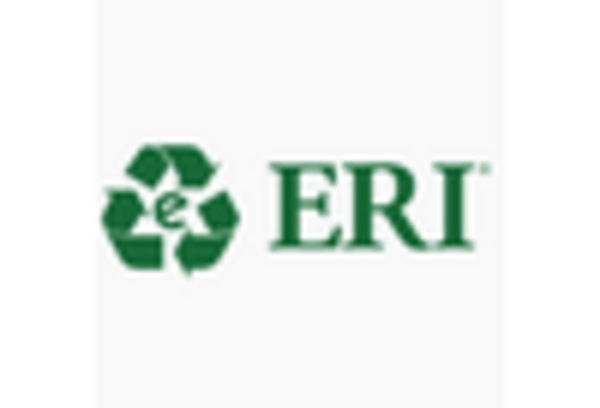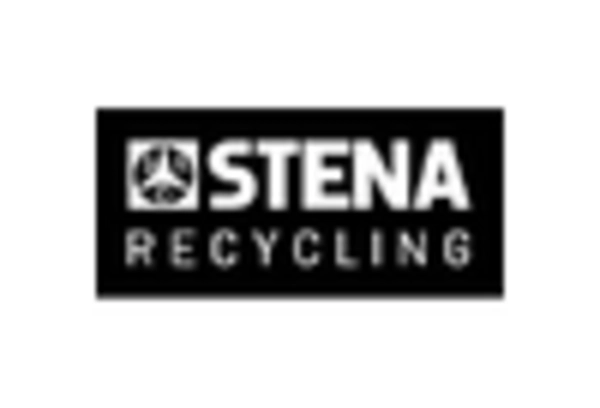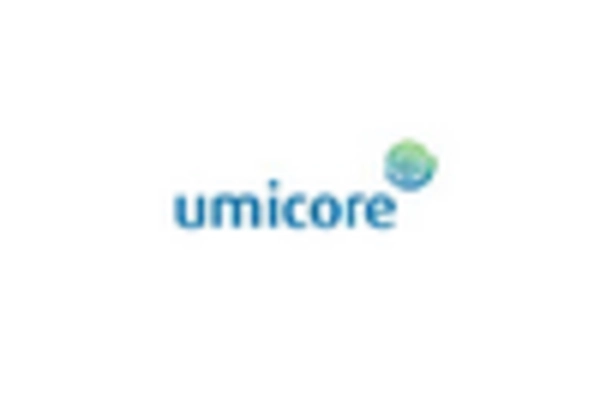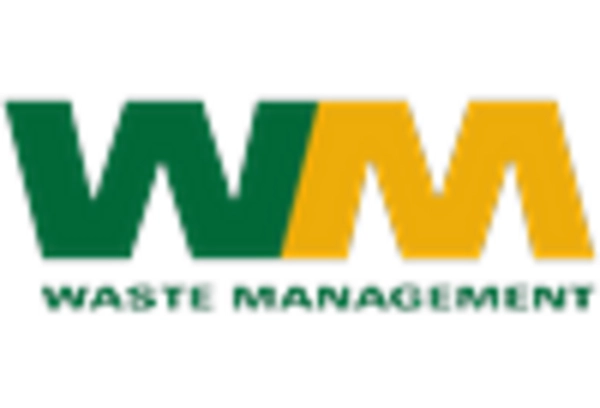Increasing E-Waste Generation
The e waste-management market in Canada is experiencing a notable increase in e-waste generation, driven by the rapid proliferation of electronic devices. With the Canadian population's growing reliance on technology, it is estimated that e-waste generation could reach approximately 1.5 million tonnes annually by 2025. This surge in electronic consumption necessitates effective waste management strategies to mitigate environmental impacts. The e waste-management market must adapt to this rising tide of discarded electronics, ensuring that recycling and recovery processes are efficient and sustainable. As consumers upgrade their devices more frequently, the volume of obsolete electronics continues to rise, presenting both challenges and opportunities for the industry. The need for responsible disposal and recycling solutions is paramount, as improper handling of e-waste can lead to hazardous environmental consequences.
Rising Environmental Concerns
Environmental concerns surrounding e-waste are becoming increasingly prominent in Canada, influencing the e waste-management market. The hazardous materials found in electronic devices, such as lead, mercury, and cadmium, pose serious risks to both human health and the environment. As awareness of these dangers grows, there is a heightened demand for effective e-waste recycling solutions. The e waste-management market is responding by developing more robust recycling processes that minimize environmental impact. Public campaigns and educational initiatives are being launched to inform citizens about the importance of proper e-waste disposal. This shift in public perception is likely to drive increased participation in recycling programs, potentially leading to a 30% rise in e-waste recycling rates by 2027. The industry must continue to address these environmental challenges to ensure sustainable growth.
Government Initiatives and Policies
Government initiatives play a crucial role in shaping the e waste-management market in Canada. Various provincial and federal policies are being implemented to promote responsible e-waste disposal and recycling. For instance, the Canadian government has introduced regulations that mandate manufacturers to take responsibility for the end-of-life management of their products. This includes the establishment of extended producer responsibility (EPR) programs, which encourage manufacturers to develop sustainable practices. As a result, the e waste-management market is witnessing increased collaboration between government bodies and private sector stakeholders. These initiatives not only aim to reduce the environmental footprint of e-waste but also foster innovation in recycling technologies. The financial implications of these policies are significant, as they can lead to increased investments in e-waste management infrastructure, potentially exceeding $100 million in the coming years.
Growing Market for Recycled Materials
The e waste-management market in Canada is witnessing a growing demand for recycled materials, driven by the increasing emphasis on sustainability. Industries are increasingly seeking recycled metals, plastics, and other materials derived from e-waste to reduce their reliance on virgin resources. This trend is fostering a circular economy, where materials are reused and recycled, minimizing waste. The e waste-management market is positioned to capitalize on this demand, as the value of recycled materials continues to rise. It is estimated that the market for recycled e-waste materials could reach $500 million by 2026. This growth presents opportunities for businesses involved in e-waste recycling, as they can supply high-quality materials to various sectors, including electronics, automotive, and construction. The shift towards sustainable sourcing is likely to drive innovation and investment in the e-waste recycling sector.
Technological Innovations in Recycling
Technological innovations are transforming the e waste-management market in Canada, enhancing the efficiency and effectiveness of recycling processes. Advanced technologies, such as automated sorting systems and hydrometallurgical methods, are being adopted to improve the recovery of valuable materials from e-waste. These innovations not only increase the yield of recyclable materials but also reduce the environmental impact of e-waste processing. The e waste-management market is likely to see a shift towards more sophisticated recycling facilities that leverage these technologies. Investment in research and development is crucial, as it can lead to breakthroughs that further optimize recycling operations. As the demand for sustainable practices grows, the integration of technology in e-waste management could potentially lead to a 25% reduction in processing costs, making recycling more economically viable for businesses.

















Leave a Comment